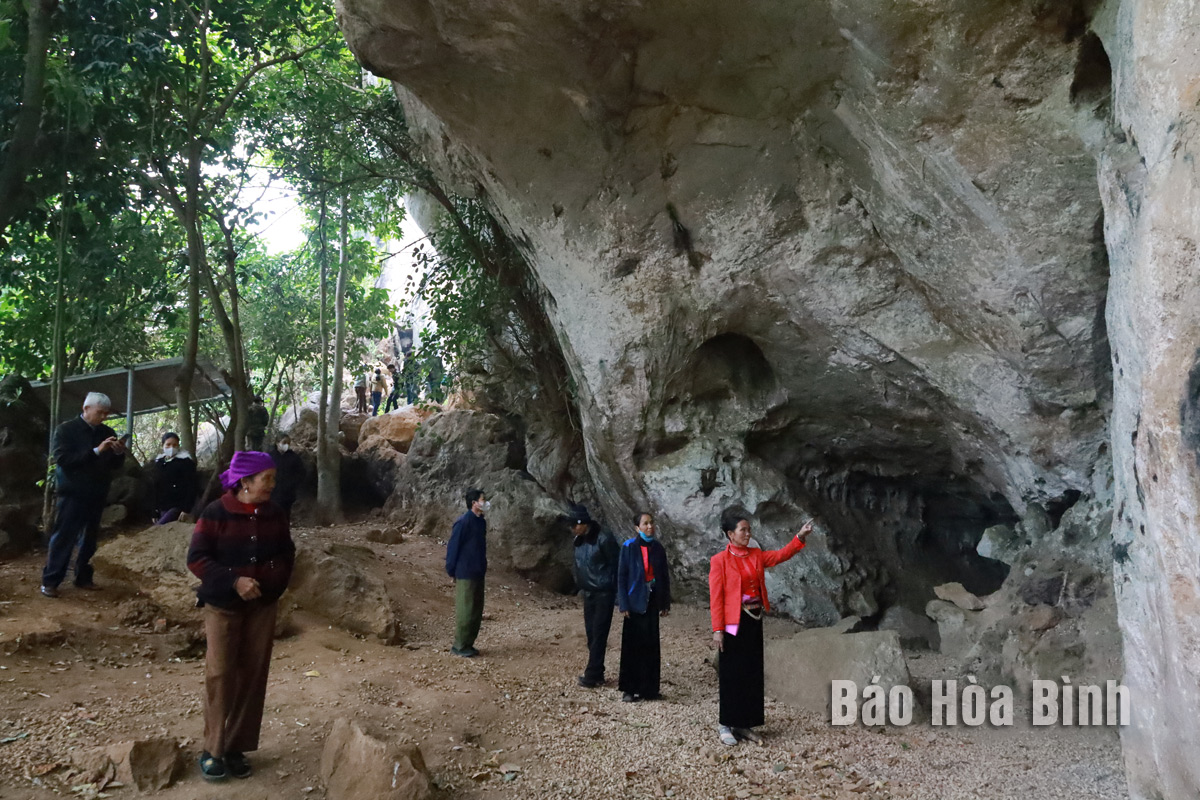
Known as the "Land of Epic History”, Hoa Binh province, the gateway to Vietnam’s northwest, boasts a strategic location and a unique cultural tapestry woven by its ethnic minority communities.
The archaeological site of the Vanh village stone
shelter in Yen Phu commune, Lac Son district, designated as a special national
relic, is an epitome of the Hoa Binh Civilisation and an invaluable tourism
resource.
Home to nearly 900,000 people, Hoa Binh is
predominantly populated by ethnic minorities, who make up 74.31% of residents,
mostly Muong, Thai, Tay, Dao, and Mong. The Muong, long-time inhabitants, have
crafted a rich legacy of tangible and intangible heritage, enriching Vietnam’s
diverse cultural landscape.
A 2021 provincial inventory catalogued 786
intangible cultural heritage elements across seven categories: language,
script, folk literature, folk performing arts, social customs, traditional
crafts, and folk knowledge. Hoa Binh claims five nationally recognised cultural
heritage elements. Among its 115 State-recognised relic sites, the Trai hamlet
cave and the Vanh village stone shelter – archaeological gems in Lac Son
district, are special national relics, alongside 39 national and 75 provincial
relics. Hundreds of other sites await classification.
Distinctive cultural assets such as traditional
festivals, folk performances, beliefs, and social customs imbued with ethnic
minorities' cultural identities form a crucial resource for developing Hoa
Binh’s cultural industries and local cultural landscape. Local authorities and
communities have ramped up preservation efforts, yielding notable progress.
Director of the Department of Culture, Sports
and Tourism Quach Thi Kieu highlighted the province’s success in safeguarding
its diverse tangible and intangible cultural heritage. These efforts have helped
deepen cultural values and power socio-economic growth.
She noted that cultural heritage has become a
catalyst for progress, contributing to Vietnam’s goal of building an advanced
and national identity-rich culture vital to national development and defence.
With an increasingly vibrant and widespread emulation movement aimed at building cultured residential areas and cultured families, Yen Thuy District has been making steady progress toward improving both the material and spiritual well-being of its people, while fostering a civilized, prosperous, beautiful, and progressive community.
Once lacking recreational spaces and community facilities, Residential Group 2 in Quynh Lam Ward (Hoa Binh City) has recently received attention for the construction of a new, spacious, and fully equipped cultural house. The project followed the model of state support combined with public contributions in both labor and funding.
The "All people unite to build cultural life" movement, which has been effectively integrated with Kim Boi district’s socio-economic development goals, is fostering a lively spirit of emulation across local residential areas, hamlets, villages, public agencies, and enterprises. In addition, through the initiative, traditional cultural values are being preserved and promoted, while community solidarity and mutual support in poverty reduction and economic development are being strengthened.
A working delegation of the Hoa Binh provincial People’s Committee led by its Permanent Vice Chairman Nguyen Van Toan on June 11 inspected the progress of a project to build the Mo Muong Cultural Heritage Conservation Space linked to tourism services in Hop Phong commune, Cao Phong district.
Born and growing in the heroic land of Muong Dong, Dinh Thi Kieu Dung, a resident in Bo town of Kim Boi district, in her childhood was nurtured by the sweet lullabies of her grandmother and mother. These melodies deeply imprinted on her soul, becoming an inseparable part of her love for her ethnic group's culture. For over 20 years, this love for her hometown has driven Dung to research, collect, and pass down the cultural values of the Muong people to future generations.
In the final days of May, the Ethnic Art Troupe of Hoa Binh Province organized performances to serve the people in remote, mountainous, and particularly disadvantaged areas within the province. These were not just ordinary artistic shows, but they were the meaningful journeys aimed at spreading cultural values, enhancing the spiritual life of the people and contributing to the preservation of ethnic minority cultural identities.



